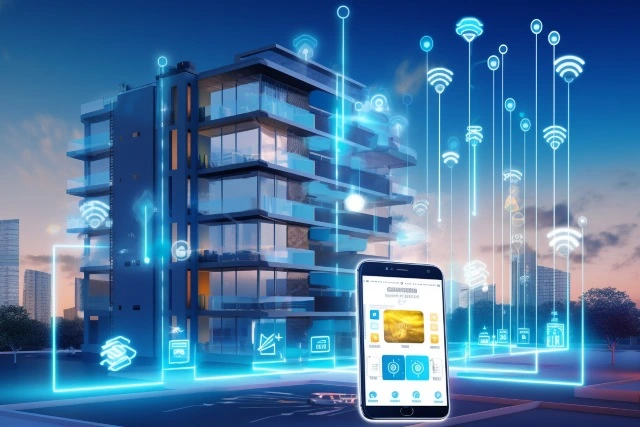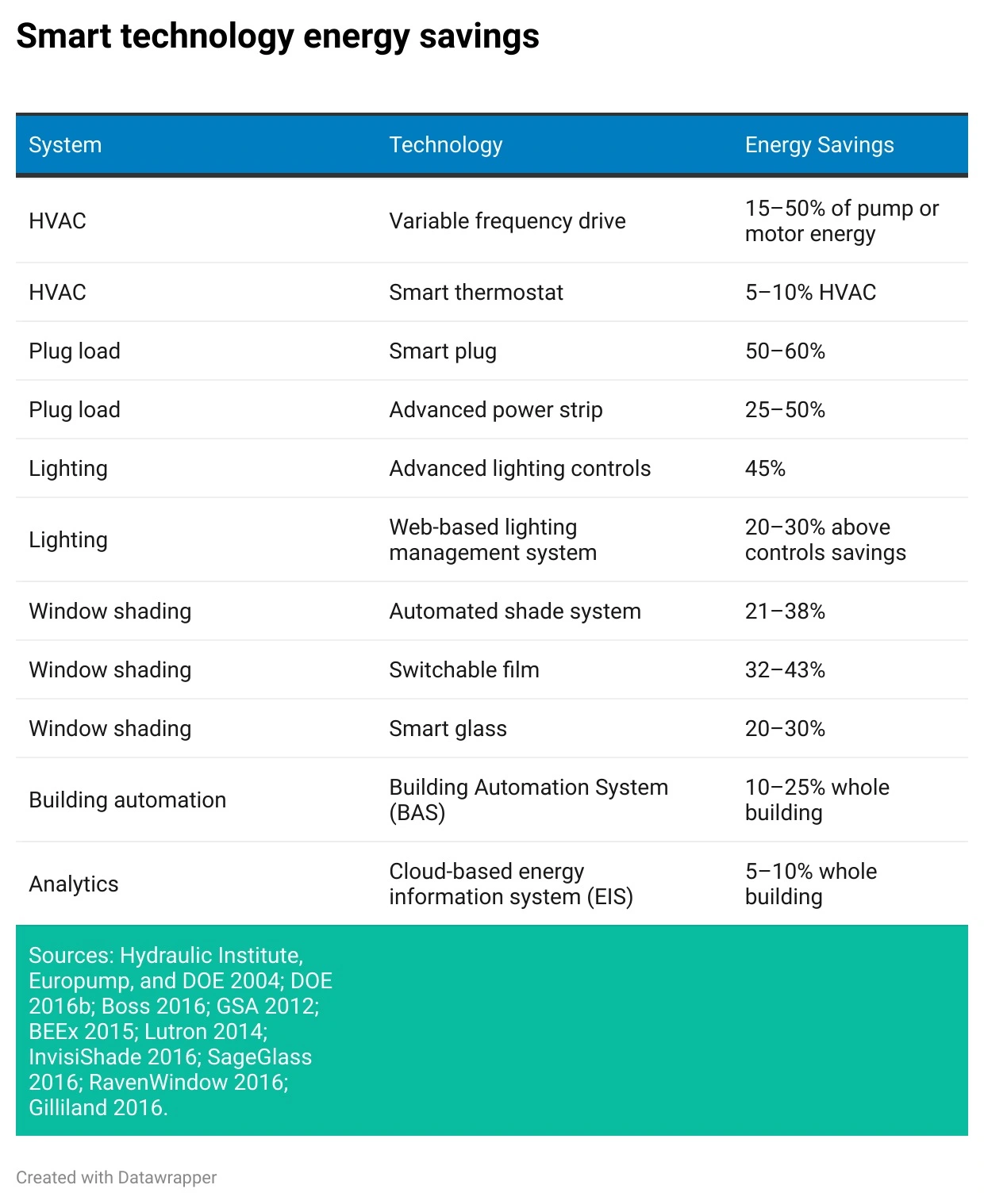As buildings become more than mere physical spaces and evolve into interconnected, dynamic environments, Internet of Things (IoT) monitoring systems have become a necessity. The sheer volume of data collected by IoT sensors in commercial buildings is simply overwhelming for employees to process. According to a prediction by the International Data Corporation, IoT devices will produce 79.4 zettabytes in 2025. So, IoT monitoring systems help make sense of this data by turning raw data into insights.
Introduction to IoT monitoring in commercial real estate
Imagine sensors and devices scattered throughout a building, continually collecting data on everything from temperature and lighting to security and energy consumption. This isn’t science fiction; it’s the current state of play in the CRE (commercial real estate) industry and powers innovative concepts like BIM coordination. But, with the sheer number of IoT devices in a normal CRE building, a person simply can’t actively monitor the amount of data that comes in.
As a result, IoT monitoring systems are the new cornerstone of intelligent building management. They provide the tools to make informed decisions based on the data collected by all IoT devices in a building.
How it can transform building management
IoT monitoring is revolutionizing building management in several key ways:
- Energy efficiency: IoT enables precise control over HVAC (heating, ventilation, and air conditioning) systems, ensuring they operate only when necessary. Smart thermostats alone can reduce energy consumption of your HVAC system by up to 10% according to the American Council for an Energy-Efficient Economy.
- Predictive maintenance: With IoT, managers receive alerts about potential equipment issues before they become expensive problems, allowing for more effective maintenance scheduling and prolonging the life of building systems. Nucleus Research claims that predictive maintenance can extend asset lifespan by up to 40%.
- Enhanced tenant comfort: Smart systems adjust building conditions to suit tenant preferences and improve security through features like automated locks and remote surveillance. All of this contributes to a safer, more comfortable environment.
- Data-driven decision-making: The wealth of data gathered by IoT devices enables a deep understanding of how buildings are utilized, allowing for operational optimizations and informed alterations to services and space usage based on concrete insights.
Best CRE-focused tools and systems for monitoring IoT devices
While you now understand the benefits of IoT monitoring software, you can’t put it into action without actual tools you can use. So, here are five IoT monitoring software that integrate seamlessly with ProptechOS that you can use today:
- Estate Logs: A comprehensive property maintenance platform aggregating data for optimized workflows, providing a tenant portal for service requests, a technician app for task management, and automated service orders based on sensor data.
- Flowity: Offers analytics tools for people counting and presence detection, generating heat maps, queue counters, and space usage metrics, with data integration into ProptechOS for enhanced property management.
- Granlund Manager: As a mobile-first property maintenance and energy management software, Granlund Manager enables full visibility of building assets, preventive maintenance, and RealEstateCore compatibility for streamlined operations.
- Metry: To provide a clean and organized dataset of third-party applications, Metry collects, structures, and quality assures all energy-related data.
- Siemens’ Navigator: By automating data discovery, Siemens’ Navigator provides insights into asset health, maintenance practices, and overall building performance.
Find all our Apps here.
Understanding the initial investment in IoT technology
Although the initial investment to bring IoT technology into your CRE buildings can be burdensome, it easily pays for itself in the long run when planned properly. Investing in IoT technology equips your business with the tools needed to transform your commercial buildings into Connected Buildings.
It provides a comprehensive view of your operations, enabling you to track and analyze previously inaccessible data. This detailed insight can lead to cost savings and the identification of new revenue opportunities.
Your magical assistant – why you most certainly need one but don’t know it yet
IoT technology is like a dedicated assistant for building owners, constantly working in the background to gather and process information. It handles tasks that would otherwise require 24/7 monitoring split into three daily shifts. This catches any potential issues as soon as the problem occurs, whether that’s a malfunctioning air handler or a light left on overnight.
You can think of your IoT monitoring system as an on-site staff member who keeps an eye on every aspect of your building to ensure smooth operations. Except your IoT monitoring system doesn’t need a salary or sleep. And that’s what makes it a magical assistant.
Tips for implementing an IoT monitoring system successfully
Successfully implementing an IoT monitoring system can transform your operations, streamline your processes, and give you a level of insight you never thought was possible. Here are some pro tips to ensure that your introduction to it is as smooth as a well-oiled conveyor belt:
- Involve stakeholders: Get input from all parts of your business that will be impacted, from IT to operations.
- Choose the right partner: Select a vendor with experience and a track record of successful implementations.
- Plan for connectivity: Ensure your location has the necessary networking infrastructure for IoT devices.
- Establish clear policies: Create guidelines for data management, device usage, and privacy considerations.
- Maintain compliance: Ensure your IoT system complies with all relevant industry regulations and standards.
- Foster a culture of innovation: Encourage your team to think creatively about how to leverage IoT data for continuous improvement.
Smooth integration with other PropTech solutions
Integration is the name of the game when it comes to PropTech. Your new IoT monitoring system should work alongside your existing tech stack with ease. Here’s what to do to ensure a smooth integration:
- Compatibility check: Start by assessing your current property technology solutions. Your new IoT system must play nice with these, so compatibility is key.
- API access: Look for IoT systems that offer robust API access. This means they’re designed to communicate with other software, making integration a breeze.
- Future-proofing: When assessing compatibility, look beyond your current tech stack. Think about your goals for the future. Choosing an IoT system that’s scalable and adaptable will save you headaches down the line.
- Expert consultation: Don’t shy away from bringing in a tech consultant. They can help you identify the right IoT system that fits like a glove with your existing setup.
Getting started and getting started now
The best time to plant a tree was 20 years ago. The second-best time is now. And the same goes for implementing your IoT monitoring system. The sooner you start, the faster you’ll reap the benefits. Here’s a quick breakdown of how you can get started with IoT technology today:
- Define your objectives: Be crystal clear on what you want to achieve with IoT. Whether it’s reducing energy costs, improving maintenance response times, or enhancing tenant comfort, having defined objectives will guide your implementation.
- Start small: You don’t have to outfit your entire operation with IoT sensors right off the bat. Start with a pilot project. This allows you to test the waters, gather data, and demonstrate value before a full-scale rollout.
- Staff training: Bring your team up to speed. Ensure they understand the new tools at their disposal and how to use them effectively. Their buy-in is crucial for a smooth transition.
- Data security: Prioritize security from the get-go. Ensure that your IoT devices and the data they collect are protected against unauthorized access.
- Iterate and improve: Use the feedback and data from your initial implementation to tweak and improve your system. IoT is not a set-it-and-forget-it solution; it’s a continuous journey of optimization.
If you’re ready to fully leverage the power of IoT technology, ProptechOS will do the trick for you. As your building’s operating system, ProptechOS ensures seamless integration between all your current and future PropTech solutions.
The IoT devices you install today can inform the software you use to manage your buildings. It also future-proofs your IoT investment by ensuring the data your IoT devices collect work with tomorrow’s technology as well. Try ProptechOS for free to see how integrating your PropTech solutions can drive new insights today!

Dr. Erik Wallin
Chief Ecosystem Officer, and founder of ProptechOS and RealEstateCore is recognized as a leader in Building Operating Systems (BOS) and making the buildings of the world smarter. He holds an MSc and a Ph.D. in Media and Computer Science from KTH Royal Institute of Technology.
Read his full bio and information here.


